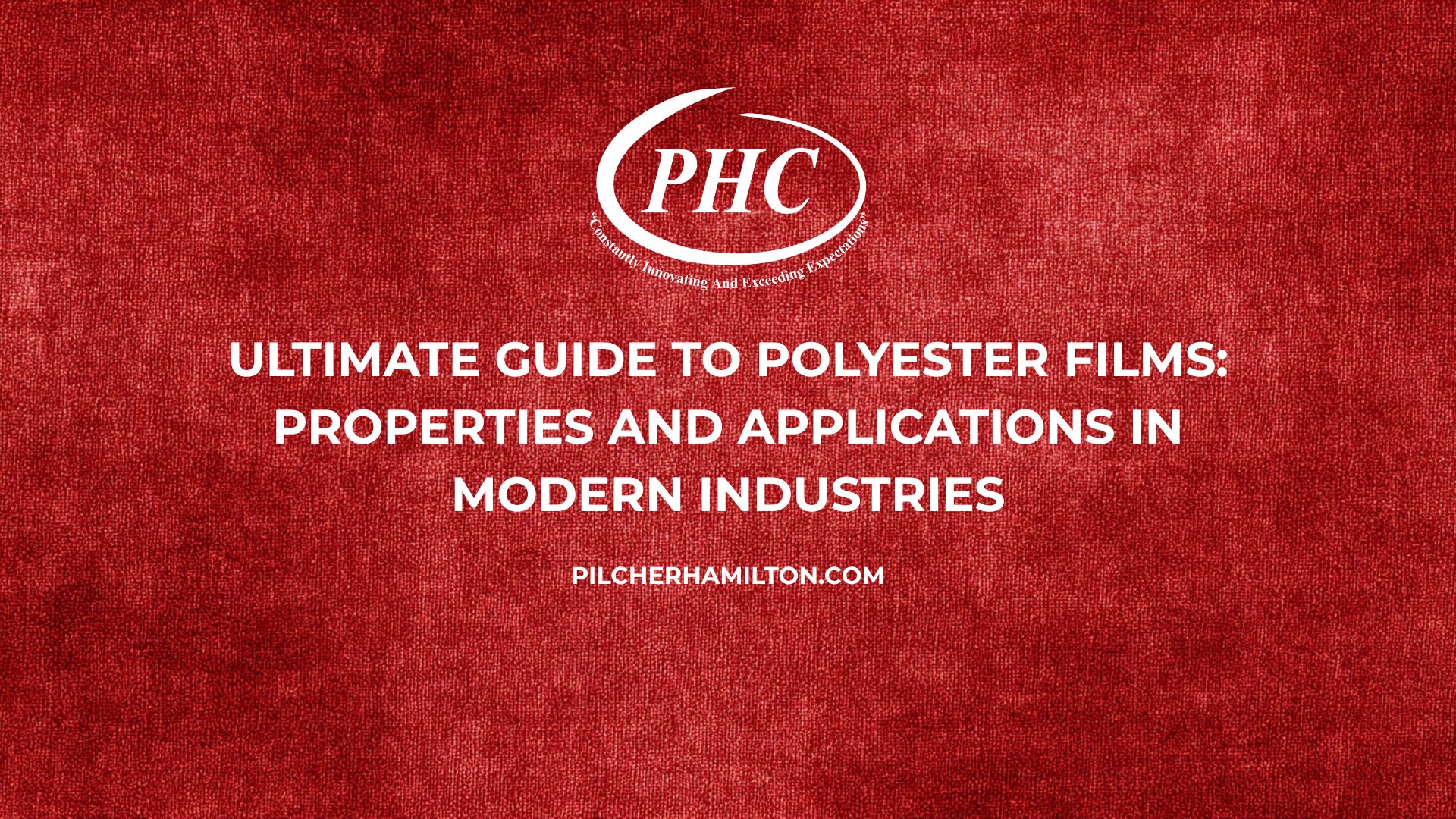Polyester films—also called PET or BOPET—are the backbone of modern flexible packaging, labeling, insulation, and graphics. If you’ve ever searched for polyester near me, you’re likely balancing performance metrics (OTR/WVTR, COF, dyne level) against real-world converting needs (slit widths, flatness, gauge control) and speed to delivery. This guide distills what matters: core properties, application-specific recommendations, and selection tips so engineers, buyers, and converters can specify with confidence.
Key Takeaways
- Performance balance: Polyester films combine high tensile strength, optical clarity, and dimensional stability—making them a reliable substrate for printing, coating, and laminating.
- Barrier tuning: Base PET offers moderate oxygen/moisture protection; metallized or PVDC-coated variants achieve high barrier when shelf life or aroma retention is critical.
- Surface readiness: Printing/laminating success depends on surface energy (dyne level). Choose corona-treated or acrylic-coated PET to hit adhesion targets.
- Machinability counts: Coefficient of friction (COF) and gauge selection impact winding tension, line speeds, and seal performance.
- Faster to spec: Align your application with PHC’s product lineup and film specs to shorten trials and accelerate launches.
What Are Polyester Films and Their Core Properties?
Polyester films (PET/BOPET) are biaxially oriented thermoplastic films known for:
- High tensile strength & modulus: Supports thin gauges (e.g., 48–92 gauge ≈ 12–23 µm) while resisting breakage and web wander.
- Excellent dimensional stability: Low shrinkage under heat; maintains register for multi-color printing and precise die-cutting.
- Optical clarity & gloss: Critical for high-clarity graphic grades and see-through packaging windows.
- Thermal resistance: Typical continuous use temperatures up to ~150 °C (302 °F) depending on grade; brief spikes higher.
- Chemical resistance: Good resistance to oils and many solvents—important for adhesives, inks, and process chemistries.
Barrier baseline:
- OTR (oxygen transmission rate): Base PET is usually in the 80–120 cc/m²·day class (23 °C, 0%–65% RH, typical lab conditions).
- WVTR (water vapor transmission rate): Often 2–6 g/m²·day (38 °C/90% RH) depending on gauge.
When you need maximum barrier, shift to metallized PET or PVDC-coated PET structures.
Surface energy & wetting:
- Untreated PET typically measures ~44 dynes/cm shortly after treatment at the mill, but treatment aging can drop dyne levels over time. For dependable ink/adhesive anchorage, many converters target ≥38–42 dynes/cm at the press.
Explore PHC’s film specs and printable/laminatable options:
- Film specs & gauges: View film specs
- High-clarity grades: High-Clarity Graphic Grades
- Packaging lineup: PET Films for Every Packaging Application
Key Applications in Packaging and Electronics
Food & Beverage Packaging
- Clear windows & labels: Take advantage of PET’s stiffness and clarity for premium shelf presence.
- Barrier laminations: Combine base PET with metallized or PVDC-coated layers for dry snacks, confections, coffee, and flavor-sensitive products that need low OTR/WVTR.
- Heat-sealable PET (HSPET): For lidding, flow-wrap, and stand-up pouches—dial in seal initiation temperature (SIT) and hot tack to match line speeds and tray/web substrates.
Healthcare, Pharma & Personal Care
- Dimensional stability ensures precise registration for dosage instructions and regulatory print.
- Chemical resistance supports alcohol/solvent wipes packaging and aggressive adhesive systems.
Electronics & Electrical
- Dielectric strength and thermal stability make PET a common insulation film for motors, transformers, and flexible circuits (select grades per your electrical and thermal requirements).
Graphics, Labels & Industrial
- Graphics & overlays: High clarity, hardness, and surface quality for crisp visual fidelity.
- Industrial laminations: Abuse-resistant outer webs, tear-resistant facestocks, process-friendly liners.
Advantages Over Traditional Materials
- Strength at thin gauges: PET often replaces thicker polyolefins or PVC while maintaining stiffness.
- Thermal window: Better heat resistance than many commodity films, enabling downstream processes (e.g., heat sealing, hot-fill compatibility with proper structures).
- Print quality: Flatness and low shrink support tight registration; pretreated or primed surfaces deliver high ink density and clean halftones.
- Recyclability pathway: Clear PET is among the more widely recycled polymers; PCR PET options can support sustainability goals (subject to your product and regulatory requirements).
Surface Engineering: Corona-Treated vs. Acrylic-Coated PET
Corona-treated PET raises dyne levels via electrical discharge, improving wetting for inks, coatings, and adhesives. It’s widely used, cost-efficient, and compatible with many pressroom chemistries. However, treatment can decay over time, so storage and re-treatment practices matter.
Acrylic-coated PET (primed) provides a chemically anchored surface that resists treatment decay, often enhancing ink holdout, lamination bond strength, and clarity in multi-layer stacks. For demanding print or adhesive systems (e.g., solvent or UV), acrylic primers are a proven path to consistent adhesion.
Related PHC pages:
Barrier Engineering: Metallized and PVDC-Coated PET
When your product needs low OTR/WVTR, PET is an ideal base for barrier enhancements:
- Metallized PET: Aluminum vapor deposition creates a reflective, high-barrier layer with premium appearance. Typical OTR can drop to <1 cc/m²·day and WVTR can fall below 1 g/m²·day, structure- and gauge-dependent.
- PVDC-coated PET: A transparent barrier option prized for aroma and moisture retention, with WVTR often ≤0.5–1 g/m²·day and OTR in the low single digits when properly formulated.
Metallized is perfect when shelf impact + barrier are both targets; PVDC is preferred when transparency is required alongside strong barrier.
Explore PHC barrier families:
Mechanical & Handling Realities: Gauge, COF, & Winding
Gauge selection (typical PET range: 12–250 µm / 48–1000 gauge) drives stiffness, barrier potential, and unit cost. Thinner gauges enhance yield and flexibility; thicker gauges improve puncture resistance and dimensional stability.
COF (Coefficient of Friction):
- High-COF / low-slip films control unwind and stacking on high-speed lines—especially critical for multi-roll splicing and automated pouching.
- Lower-COF surfaces can reduce blocking and allow smoother web travel where aggressive nip pressures or high humidity are present.
Winding & edge quality:
- Uniform gauge and controlled modulus minimize bagginess and telescoping.
- Clean slit edges reduce web breaks and aid crystal-clear laminate windows.
Future Trends in Sustainable Polyester Films
- PCR content: PET with post-consumer recycled content can reduce virgin usage while maintaining clarity and machinability for many applications.
- Monomaterial paths: Designing laminations that enable simplified recycling is increasingly common—PET-PET structures with compatible seal layers are one route (application-dependent).
- Functional coatings: Thin barrier and primer layers that maintain recyclability or reduce overall structure mass continue to advance.
Buyer’s Checklist: Specifying Polyester Films
Use this quick checklist to accelerate trials and avoid line downtime.
- Application & End-Use
- Food contact? Required shelf life? Aroma-sensitive?
- Transparency or mirror-like appearance needed?
- Food contact? Required shelf life? Aroma-sensitive?
- Barrier Targets
- OTR target: ___ cc/m²·day (23 °C)
- WVTR target: ___ g/m²·day (38 °C/90% RH)
- Consider metallized or PVDC-coated PET if targets exceed base PET.
- OTR target: ___ cc/m²·day (23 °C)
- Surface & Print
- Dyne level at press: aim ≥38–42 dynes/cm.
- Need corona-treated or acrylic-coated for your ink/adhesive system?
- Dyne level at press: aim ≥38–42 dynes/cm.
- Gauge & Mechanical
- Gauge (µm / gauge): ___ / ___
- Stiffness vs. conformability? Puncture resistance needs?
- Gauge (µm / gauge): ___ / ___
- COF & Handling
- High-COF for controlled stacking vs. low-COF for fast web travel?
- Antiblock, anti-fog, or static control required?
- High-COF for controlled stacking vs. low-COF for fast web travel?
- Sealing & Line Conditions
- SIT / hot tack window to match APET/CPET/PP/PS trays or webs?
- Line speeds, nip pressures, and thermal profile?
- SIT / hot tack window to match APET/CPET/PP/PS trays or webs?
- Regulatory & Documentation
- Food-contact statements, RoHS/REACH where applicable.
- Food-contact statements, RoHS/REACH where applicable.
- Converting & Logistics
- Roll OD/ID, core type, slit width tolerance, packaging method.
- Lead times, blanket orders, VMI options.
- Roll OD/ID, core type, slit width tolerance, packaging method.
Specification Table (Typical Ranges)
These representative values help frame discussion; actual specs vary by grade, gauge, and structure.
| Parameter | Typical Range / Notes |
| Gauge (µm / gauge) | 12–250 µm / 48–1000 gauge |
| Tensile Strength (MD/TD) | High; supports thin, stiff webs |
| Dimensional Stability | Low shrink; excellent registration |
| Surface Energy (treated) | 38–56 dynes/cm (target ≥38–42 at press) |
| Base PET OTR | ~80–120 cc/m²·day (23 °C; humidity-dependent) |
| Base PET WVTR | ~2–6 g/m²·day (38 °C/90% RH) |
| Metallized PET OTR | Can be <1 cc/m²·day (structure & gauge dependent) |
| Metallized PET WVTR | Often <1 g/m²·day |
| PVDC-Coated PET OTR | Low single digits possible |
| PVDC-Coated PET WVTR | ~0.5–1 g/m²·day common |
| COF Options | High-COF (controlled) to low-COF (slippery), per application |
| Seal Windows (HSPET) | SIT and hot tack tuned to APET/CPET/PP/PS |
For detailed gauges, widths, and treatments, see:
PHC Film Specs and Packaging Lineup
Application-Driven Selection Examples
Clear Snack Pouch (Window Feature)
- Outer: Clear PET (corona-treated or acrylic-coated) for print quality and stiffness.
- Barrier: Metallized PET or PVDC-coated PET (depending on visibility needs).
- Sealant: PE or copolyester heat-seal layer tuned for SIT & hot tack.
Coffee or Aroma-Sensitive Products
- Barrier first: Metallized or PVDC-coated PET to push OTR/WVTR down.
- Print surface: Primed PET for ink density and rub resistance.
- COF strategy: Controlled COF to avoid scuffing at high speeds.
Lidding on APET/CPET Trays
- HSPET lidding: Ensure seal profile matches tray polymer; validate peel strength (N/15 mm) and hot tack across line speeds.
- Anti-fog option: For hot case or chilled displays.
FAQs
Q1. What’s the difference between PET and BOPET?
A. PET is the polymer; BOPET refers to biaxially oriented PET, the standard orientation process that gives polyester films their hallmark strength, clarity, and stability.
Q2. How do I keep adhesion consistent over time?
A. Start with the right surface: corona-treated PET for general printing/coating or acrylic-coated PET where long-term dyne stability and higher bond strength are critical. Store rolls in controlled humidity/temperature and verify dyne at the press.
Q3. How can I reach high barrier without losing visibility?
A. PVDC-coated PET maintains transparency with strong OTR/WVTR performance. If mirror-finish aesthetics are desired, choose metallized PET but plan graphics accordingly (e.g., white inks, spot metallic effects).
Q4. What COF should I specify?
A. It depends on your equipment. High-COF/low-slip aids controlled stacking and tensioning; lower-COF can reduce blocking and improve feed at high speeds. Match COF to nip pressures, web paths, and product stacking requirements.
Q5. How does “polyester near me” translate to faster deliveries?
A. Searching polyester near me is about reducing transit time and ensuring local inventory plus converting capacity. PHC’s U.S. footprint and converting services help shorten the path from spec to shipment.
Talk to PHC About Your Next Polyester Specification
Need help finalizing gauge, dyne targets, or COF for your line speeds? Let’s translate your performance brief into a ready-to-run film spec—fast. If you’re exploring polyester near me to improve lead times, we’re ready to help with application-matched materials and precision converting.
- Explore film specs and options: PHC Film Specs
- See our packaging lineup: PET Films for Every Packaging Application
- Get in touch: Contact PHC
Address:
850 South Buncombe Road
Greer – South carolina
Serving the USA from Greer – South carolina with responsive support and converting capacity.
850 South Buncombe Road
Greer – South carolina
Find us nationwide: Locations
Connect with our team: Contact PHC

